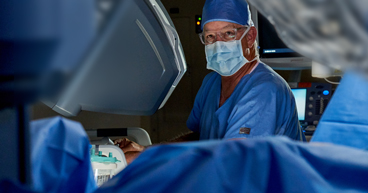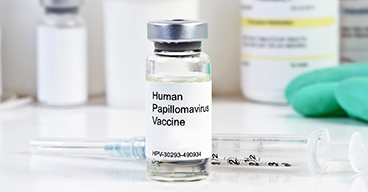
Cervical cancer was once the leading cause of cancer deaths in women. Over the years, with improved testing and screening and early detection, the rate of new cervical cancer cases has been cut nearly in half since the early 1990s. Now, the American Cancer Society (ACS) has updated its screening guidelines to encourage women to get more types of screening tests, while changing the ages at which women should consider getting screened.
Women should begin screening at age 25
The ACS previously recommended cervical cancer screenings start at age 21. But evidence has shown that screening for cervical cancer too early and too often may result in unnecessary tests and related stress.
“Women under 25 are considered a low-risk population in that they are more likely to have a false positive Pap test, which may lead to interventions, such as a colposcopy or cervical biopsy,” says Justin Chura, MD, Chief of Surgery and Director of Gynecologic Oncology and Robotic Surgery at Cancer Treatment Centers of America® (CTCA), Philadelphia. “Or they may test positive for HPV, but most people will clear the infection and won’t have long-term consequences. The incidence of cervical cancer in that population is very small because it takes three to 10 years, typically, for precancer to turn into cancer.”
Women should get screened with HPV and/or Pap tests
Women who are at average risk for cervical cancer should have a primary human papillomavirus (HPV) test—meaning that it’s performed by itself—every five years, until age 65. If a primary HPV test is not available, the ACS recommends co-testing—or a combination HPV and Pap test—every five years. Some HPV tests are approved by the FDA only when performed at the same time as a Pap test. If co-testing is not possible, the ACS recommends a third acceptable option: getting a Pap test every three years.
What’s the difference between Pap and HPV tests?
A Pap test looks for cancer cells or cells that may turn into cancer. An HPV test examines cells for the presence of an HPV infection.
HPV is the most common sexually transmitted infection in the United States, diagnosed each year in some 14 million American men and women, including teens. Annually, the United States also sees nearly 14,000 new cases of cervical cancer, nearly all of them caused by HPV, which is easily spread from skin-to-skin sexual contact via oral, anal and vaginal sex.
There are more than 150 strains, or types, of HPV, and both women and men are at risk. The virus is also linked to cancers of the vulva, vagina, penis, anus and throat, according to the U.S. Centers for Disease Control and Prevention (CDC). In fact, the CDC reports that HPV is believed to be responsible for 70 percent of throat cancers in the United States.
At least a dozen of the more than 150 HPV strains are considered high-risk, meaning that if the immune system doesn’t clear the infection, it may become cancerous. “Almost everybody whose sexually active gets an HPV infection at some point, and most have no consequences,” Dr. Chura says. “But we can’t determine who will clear it and who won’t.”
Since the vaccine’s initial approval in 2006, 86 percent fewer teen girls have become infected with the HPV strains responsible for most HPV cancers and genital warts, according to the CDC. The vaccine may prevent more than 90 percent of cancers caused by HPV from developing. The ACS recommends that women who have received the HPV vaccine still follow the screening guidelines.
Should everyone get screened?
The new guidelines do not apply to those who have already been diagnosed with cervical cancer or cervical pre-cancer, or women with a suppressed immune system. The two groups for whom screening is not recommended are:
- Women with a cervix who are older than 65, as long as they have had normal results during 10 years of regular screenings
- Women who have had their cervix removed, unless the surgery was performed due to cervical cancer or serious pre-cancer



